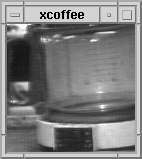D
Deleted member 9563
Guest
I'm sure people here have things to say about IoT.
I personally find it mostly useless and the wrong way to go in most cases. It basically takes scripting, which belongs on the command line, to your house - and beyond.
Security is one of the major problems for most people, since they haven't any clue about what security could be about, outside of of installing a deadbolt on their door. This aspect really hit home when it was discovered that people's security cameras were being used for DDoS attacks. I got hit by that one.
Another thing that I find abhorrent is that it simply isn't needed in most cases, and serves no useful purpose for healthy people who might actually need the exercise that some device is intended to eliminate. In my artistic house, a lot of modern technology actually would look downright stupid, if not just out of place. I have always tried to cut out plastic objects in my living space because it's just cheap, and I have more self esteem than that. However, I have considered lighting control since I have an awful lot of lights to make the place look nice.
So, what thoughts and concerns do other people have about IoT?
I personally find it mostly useless and the wrong way to go in most cases. It basically takes scripting, which belongs on the command line, to your house - and beyond.
Security is one of the major problems for most people, since they haven't any clue about what security could be about, outside of of installing a deadbolt on their door. This aspect really hit home when it was discovered that people's security cameras were being used for DDoS attacks. I got hit by that one.
Another thing that I find abhorrent is that it simply isn't needed in most cases, and serves no useful purpose for healthy people who might actually need the exercise that some device is intended to eliminate. In my artistic house, a lot of modern technology actually would look downright stupid, if not just out of place. I have always tried to cut out plastic objects in my living space because it's just cheap, and I have more self esteem than that. However, I have considered lighting control since I have an awful lot of lights to make the place look nice.
So, what thoughts and concerns do other people have about IoT?


